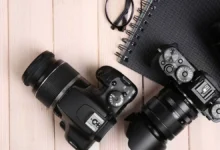
9 Top Tips For Safety in Indoor Playgrounds
Building a safe commercial indoor playground is a priority for anyone creating an indoor play space. Of course, you want the area to be fun and inspire creativity for kids. Still, whether you are making a playground in a daycare center, school, home, restaurant, or any indoor area, you’ll want to design an inclusive site that will help you reduce the risk of injury.
Table of Contents
Tips for Indoor Playground Safety
When it comes to designing an indoor playground, there are some things you can do to help keep the kids involved in fun activities while reducing the risk of injury. Here are some tips to help you design a safe, functional area that will keep everyone happy.
Consider your space.
The first step to creating an indoor playground is considering your space. Whether you have a smaller room or a larger area, you’ll need to plan out your play space and decide how it will be set up.
If you have enough space, it might be best to create a separate play area for younger and older children. This way, they can enjoy different activities without having to worry about bumping into each other or getting hurt. You can also consider limiting certain activities if necessary, such as slides and swings if there isn’t room for them both in the same area.
Choose flooring wisely.
The flooring of your playground is an essential element that can make or break your commercial indoor playground. There are many different flooring options, including carpet, rubber, and wood, but each comes with its own set of potential safety concerns.
While carpet can provide softness and cushion to an indoor area, it can also be a tripping hazard for kids and adults alike. Rubber flooring, on the other hand, provides a stable surface for children but is susceptible to damage, such as tears or cuts from sharp objects. While wood flooring is considered one of the safest options for your commercial indoor playground since it does not have as many risks associated with it as carpet or rubber flooring, you may need to replace it more often due to damage from spilled liquids and food.
Make sure your playground has safety zones.
Suppose you are designing a commercial indoor playground for children under age five years old. In that case, the entire area should be divided into safety zones based on height so that kids do not have access to areas that could pose a risk for injury.
Invest in high-quality Playground Equipment.
Toys and equipment should be sturdy and not present a risk of injury if a child falls on them. The playground equipment indoors should be properly maintained so that it is free from sharp edges, splinters, and rough surfaces. Make sure your playground equipment is not placed near any hazards such as large rocks or trees. In addition, ensure that your play area is at least 10 feet away from any drop-offs (such as cliffs).
Choosing the right kind of playground equipment is an important first step toward preventing injuries. Parents should avoid playgrounds with wooden structures that contain nails or other sharp edges. Plastic structures are a safer choice.
Be Mindful of Sharp Objects.
Be mindful that children are on the move, exploring their world, and are very curious. They may wander in different directions and be oblivious to sharp objects such as broken glass, or even a nail or jagged piece of wood on the floor. Sharp objects can cause lacerations, puncture wounds, and severe pain. If you happen to see any sharp object in your indoor play area, please remove it immediately. In case of an injury resulting from a sharp object, the parent will know who was responsible for its removal and will avoid blaming you or your business.
Identify risks for children.
Create a list of potential hazards that could be in your space and how you will mitigate them. For example, if you are planning on adding swings, you might need to install padded mats underneath them to prevent injury from falls. You may want to consider installing handrails and safety barriers around stairs for extra protection.
Evaluate the space for potential risks. As part of your preparation, walk through your area with an eye toward all potential hazards that might present a danger to children who use this space.
Install handrails.
Always install handrails on all sides of any slide, climbing wall, or jungle gym. Some people think it’s fine to skip this step when installing equipment for younger children who are not big enough to climb onto equipment on their own. However, handrails offer an extra level of protection for toddlers who may try to climb up the equipment independently. Also, never allow children under the age of 6 to use a slide without an adult present at all times.
Use padding and soft surfaces.
Soft, padded surfaces such as mats or pillows should be used in the area where children play. This will provide a safe barrier between children and hard surfaces, objects, and equipment. Soft materials are also safer to fall on than hard ones. Make sure that outdoor playgrounds have safety surfacing that is appropriate for the age group and type of activities being performed. For example, soft mulch or rubber mulch is recommended for a safer fall when climbing on an outdoor playground.
Height
Keep the height of the equipment at a level that is safe and accessible for children of all ages. A good guideline is to keep the highest point of the play equipment no more than 12 feet off the floor. This is especially important for toddlers and young kids who can climb on things but not necessarily get down from them.
For example, if you have your playground in a room, set up a soft surface like carpet or padding around the base of your equipment, so it’s easy to land on if a child has an accident. This seems obvious, but accidents happen, especially when adults aren’t paying close attention to what kids are doing.
Takeaway
All in all, if you’re going to run an indoor playground, you need to do your homework on safety needs. Indoor playgrounds should focus on fun, but they also need to balance that with the need for a safe environment. Obviously, this can be balanced well in the right circumstances and by keeping up on regular maintenance, but only you can decide whether your indoor playground is the right sort of place to bring your kids when you have so many other options available.








